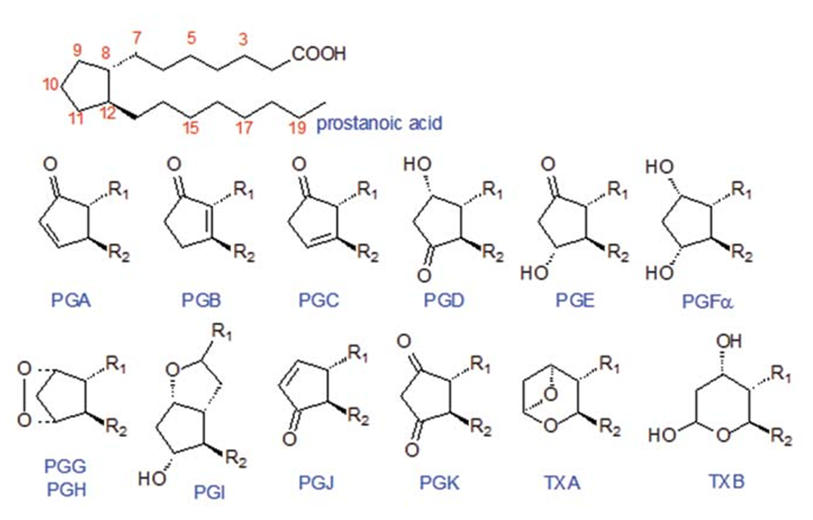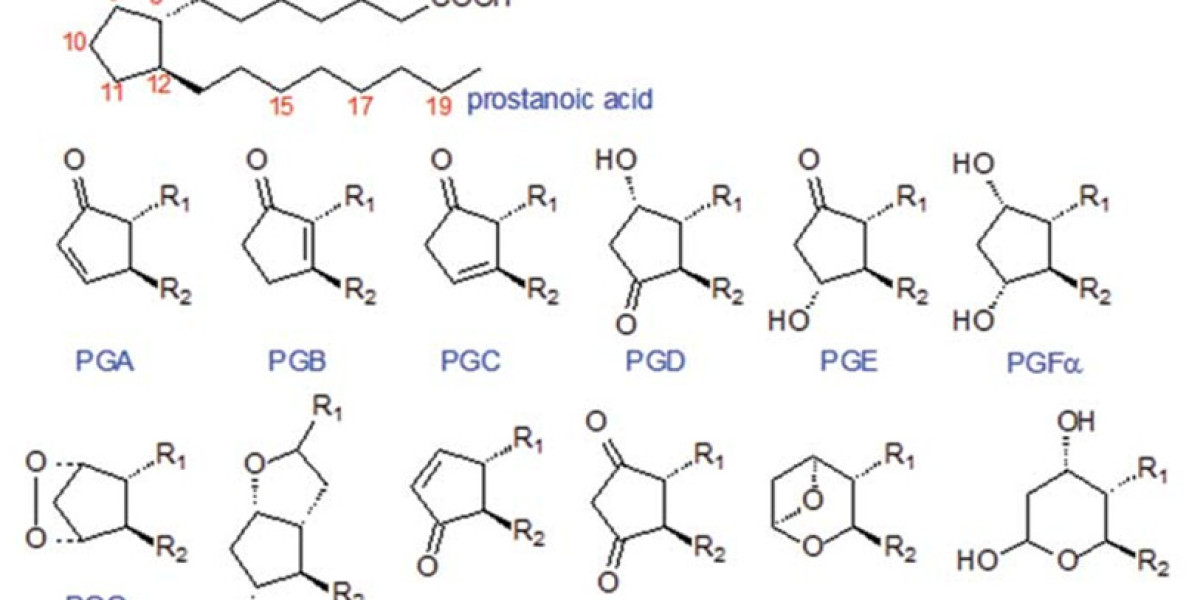Prostaglandins (PGs) are unsaturated fatty acids synthesized from arachidonic acid in the human body. According to their structure, PGs are classified into types A, B, C, D, E, F, G, H, and I. The vast majority of renal PGs are produced by interstitial cells and collecting duct cells in the papillae of the renal medulla. The human seminal vesicles, lungs, kidneys, brain, and gastrointestinal tissues, and other cells throughout the body can secrete PGs in almost all tissues.

Functions of prostaglandins
Different types of PGs have different functions. PGs are active substances with multiple physiological effects on the endocrine, reproductive, digestive, blood respiratory, cardiovascular, urinary and nervous systems.
(1) Effects on reproductive system
PG acts on the neuroendocrine cells of luteinizing hormone-releasing hormone in the hypothalamus to increase the release of luteinizing hormone-releasing hormone, which in turn stimulates the secretion of luteinizing hormone and follicle-stimulating hormone in the anterior pituitary, thereby increasing testosterone secretion and directly stimulating the secretion of testicular interstitial cells.
PG maintains smooth muscle contraction in male reproductive organs and is thought to be related to ejaculatory effects. PG in semen relaxes the cervical muscles and facilitates the movement of sperm in the reproductive tract, which facilitates fertilization. Large amounts of PGs, however, have an inhibitory effect on male reproductive function and can cause strong contractions of the uterus.
(2) Effects on vascular and bronchial smooth muscles
The effect of different types of PGs differs on vascular smooth muscle and bronchial smooth muscle. Prostaglandin E and prostaglandin F can relax vascular smooth muscle, thus reducing peripheral resistance to blood flow and lowering blood pressure.
(3) Effects on the gastrointestinal tract
PGs can cause smooth muscle contraction, inhibit gastric acid secretion, prevent erosion of gastric mucosa by strong acid, strong alkali and alcohol-free, etc., and have cytoprotective effects. PGs also have protective effects on the small intestine, colon and pancreas. It can also stimulate intestinal fluid secretion, bile secretion, and contraction of gallbladder muscle.
(4) Effects on the nervous system
PGs are widely distributed in the nervous system and play a regulatory role in the release and activity of neurotransmitters. It is also believed that PGs themselves have neurotransmitter effects.
(5) Effects on the respiratory system.
Prostaglandin E has a relaxing effect on bronchial smooth muscle, while prostaglandin F, on the contrary, is a bronchoconstrictor.
(6) Effects on the endocrine system.
PGs affect the synthesis and release of hormones by influencing the high and low levels of cyclic adenosine monophosphate (CAMP) in endocrine cells. For example, it induces thyroxine secretion and adrenocorticotropic hormone synthesis. It also reduces hormone action by decreasing CAMP levels in target organs.
Prostaglandin detection methods
The most common methods for the identification of prostaglandins include the use of high-performance liquid chromatography (HPLC) with fluorescence or UV detection, liquid chromatography coupled with mass spectrometry (LC-MS/MS), gas chromatography coupled with mass spectrometry (GC-MS/MS), enzyme immunoassay, and radioimmunoassay.
Immunoassays have low specificity and are not suitable for the simultaneous analysis of multiple prostaglandins. HPLC-UV and GC/MS can provide higher sensitivity, but require derivatization to facilitate detection and improve sensitivity. In addition, LC-MS/MS allows for rapid and sensitive simultaneous analysis and quantification of prostaglandins without derivatization.



